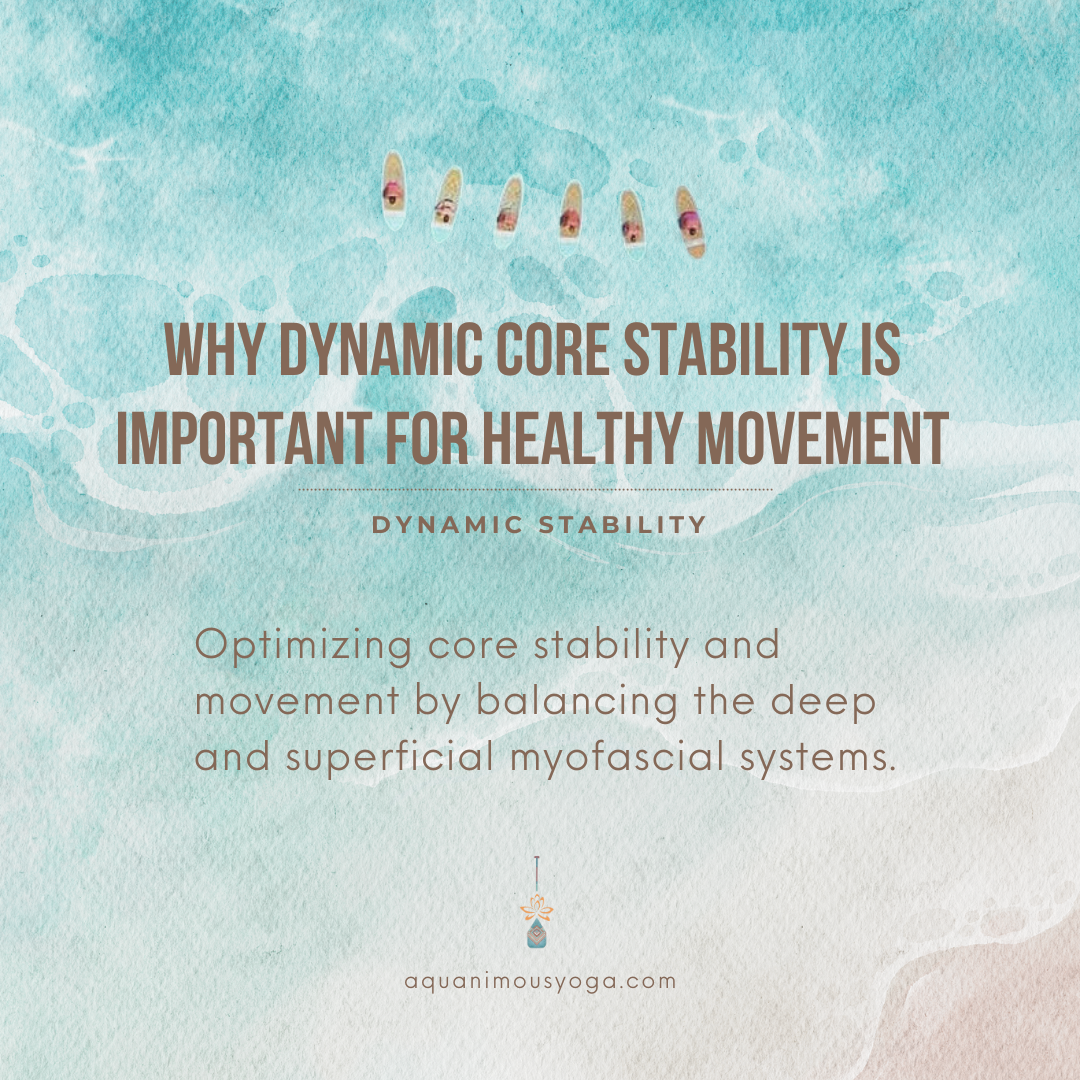
11 Jan Why Dynamic Core Stability is Important for Healthy Movement
The deep and superficial myofascial systems, coordinated by the nervous system, work synergistically to support the development of optimal core stabilization and movement patterns.
The muscles of the deep myofascial system (DNS) are the deep-lying muscles that work to maintain our posture despite the downward compressive force of gravity. They contract slowly and have great endurance. But they are prone to over activity and tend to tighten when they are overused.
The muscles of the superficial myofascial system (SMS) are designed to move us for short periods of time to complete a task. They contract quickly but have poor endurance. They are prone to lengthening when they are weak.
The DMS is essentially what we refer to as the dynamic core muscles and their predominant function is to stabilize us. The SMS creates movement in the body as well as a stable and healthy posture.
Strengthening our dynamic core muscles or DMS improves our ability to effectively transfer loads between the upper and lower body. They also integrate and coordinate movement between the trunk with the limbs through the action of the outer units or SMS.
Whether we’re picking a heavy box off the ground or simply going for a walk, improving our dynamic stabilizers will strengthen the torso’s connection to our ams and legs which helps to optimize movement and prevent injuries.
Since the body is a dynamic system, it adapts to the things it is asked to do. If we are inactive, the brain will essentially disconnect from our SMS muscles and instead ask the DMS muscles to do things that SMS muscles should do.
This tightening of an overactive DMS muscle, coupled with the lengthening of a weakened SMS muscle leads to core imbalance, joint instability and impaired proprioception creating compensatory movement patterns that cause chronic pain, muscle tension, and repetitive stress injuries.
The AY Practice properly challenges the natural functions of these muscles and follow an optimal protocol regarding the order in which they are worked, and so is very different from traditional yoga and strength training exercises.
Developing balance between the deep and superficial myofascial systems is part of our integrative approach to achieving core stability.
Non-optimal levels of compression (i.e., too much compression for the task in hand and/or too much compression for too long a period of time) result from the lack of balance between the systems.
Incorporating our AY principles to restore balance and using the appropriate exercise progressions will help you develop a core-efficient strategy that supports your health and fitness goals.

Sorry, the comment form is closed at this time.